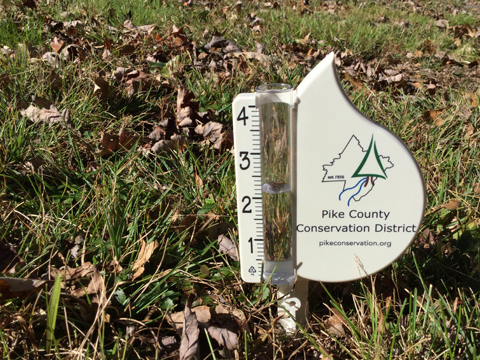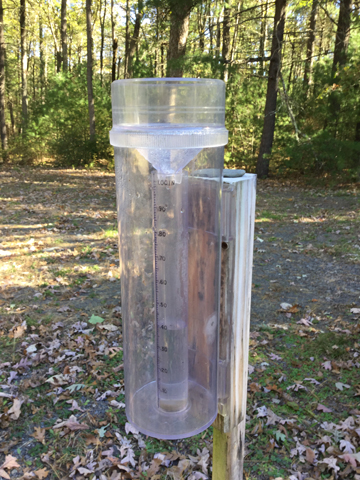News

Why Use a Rain Gauge?
By Marianna Quartararo, Resource Conservationist
The sum of daily rainfall calculated from rainfall records equates to total annual rainfall. One of the first weather related instruments our ancestors used to measure this data is the rain gauge – also known as an udometer, pluviometer, or ombrometer.
The first known reference to rainfall measurement was in India 200 years ago. Rainfall records from centuries ago still exist. This data helps researchers study weather patterns in order to compare today’s climate to that of the past.
Rainfall Data
Knowing the average rainfall for an area helps farmers make decisions about planting, harvesting, and irrigating crops. Engineers also use this information to design things like stormwater management structures, bridges, and roads.
Rain gauges are also used to monitor global weather patterns and help meteorologists prepare for natural disasters.
Types of Rain Gauges
The original design of the rain gauge, a cylindrical cup with a funnel, hasn’t changed much over the centuries. There are three major types of professional rain gauges: standard, tipping bucket, and weighing gauge.
Standard

Standard Rain Gauge
The standard gauge is a funnel-shaped collector that is attached to a measuring tube. These tubes are usually 8 inches. The diameter of the collector is 10 times that of the tube; thus, the rain gauge works by magnifying the liquid by a factor of 10.
Magnifying the rain in this way allows precise measurements down to one-hundredth of an inch. Amounts that exceed the tube capacity are caught in the outer shell of the gauge, allowing the recorder to pour out the liquid in the tube to measure the overflow.
The Community Collaborative Rain, Hail and Snow Network (CoCoRaHS), a non-profit, community-based network of volunteers of all ages and backgrounds working together to measure and map precipitation, encourages its volunteers to use this type of gauge.
Consider becoming a CoCoRaHS volunteer weather observer! Visit the CoCoRaHS website for more information.
Tipping Bucket
The tipping bucket gauge has a funnel that leads to one of two small buckets. The filling of the first bucket at 1/100th of an inch results in tipping of the liquid into the outer shell of the gauge which triggers the second bucket to take its place. This allows for precise measurement of the intensity and amount. This type is used at wireless precipitation measuring stations.
Weighing
The universal weighing rain gauge is optimal for climatology use. A vacuum accounts for the effects of wind, which allows more rain to enter the gauge. These gauges are very precise in measuring rainfall intensity as the weighing mechanism at the bottom of the collector can be used to measure depth and time simultaneously.
Backyard Rainfall Data
Many people, however, use a simple garden rain gauge, like the one in the top photo, to measure the level of local rainfall. This type of gauge consists of a plastic or glass tube with inch or centimeter markings on its exterior. Garden rain gauges are typically mounted on a stake and located in an open area, which receives unobstructed rainfall.
The rain gauge is an important tool that’s easy to use. And, with today’s fast digital communication, it is easy to share data and become a citizen scientist or amateur meteorologist.
Sources: sciencing.com, cocorahs.org
